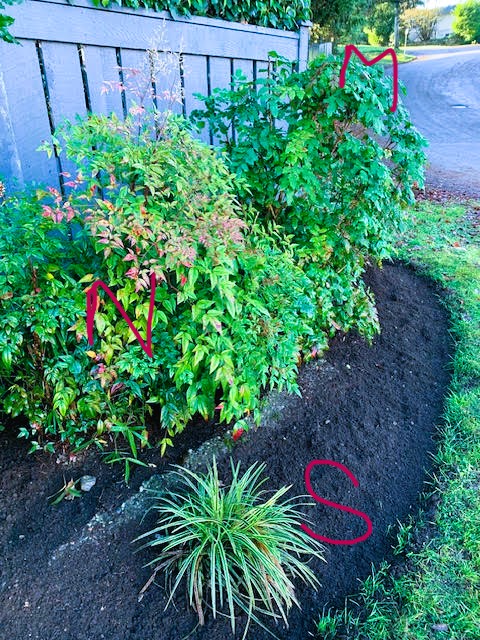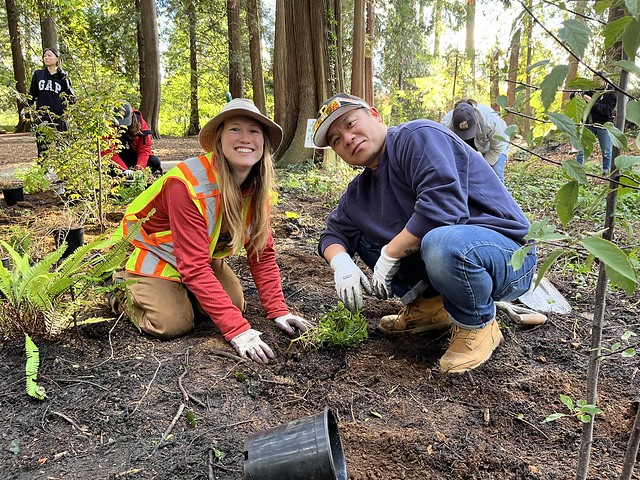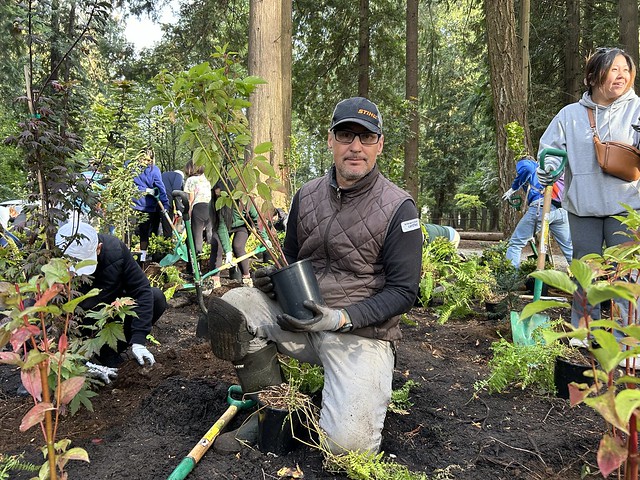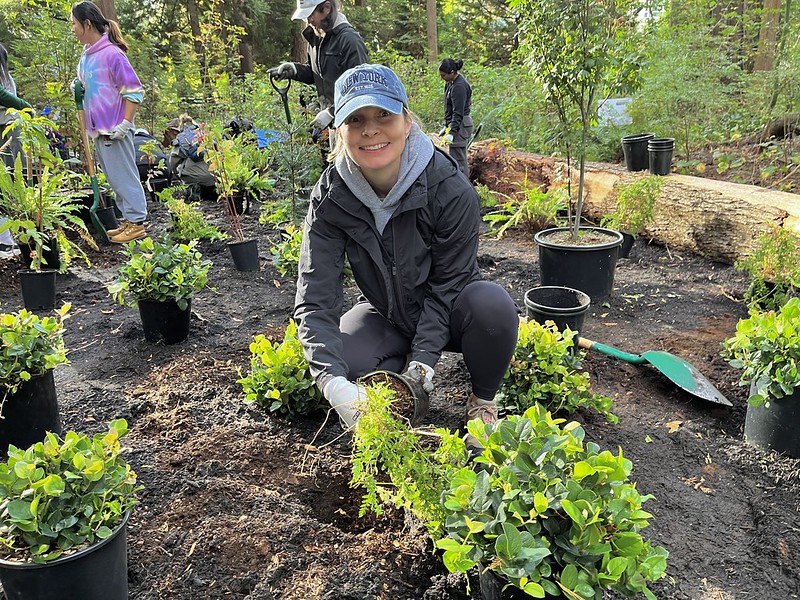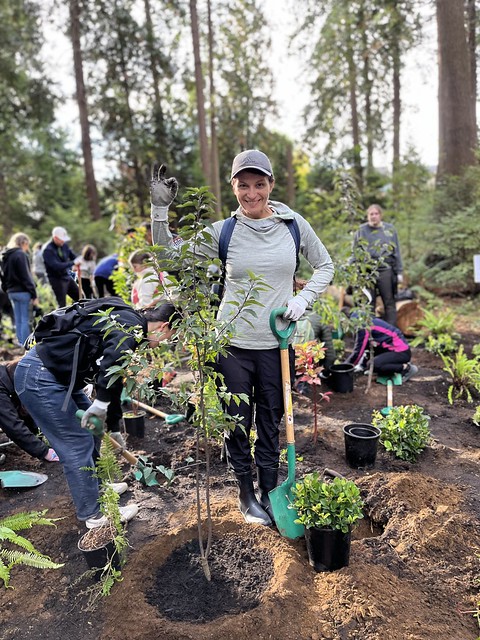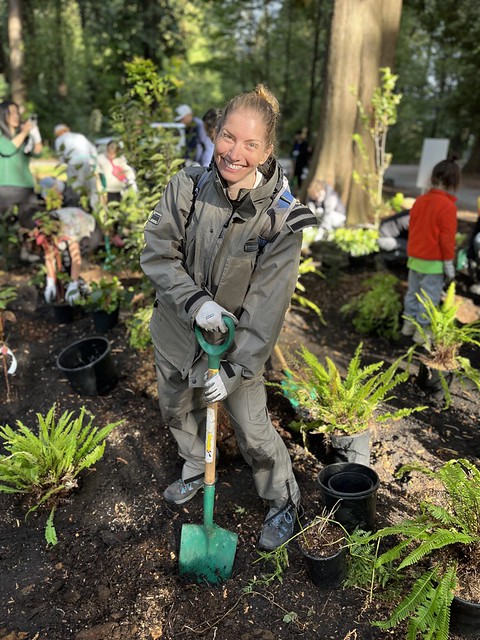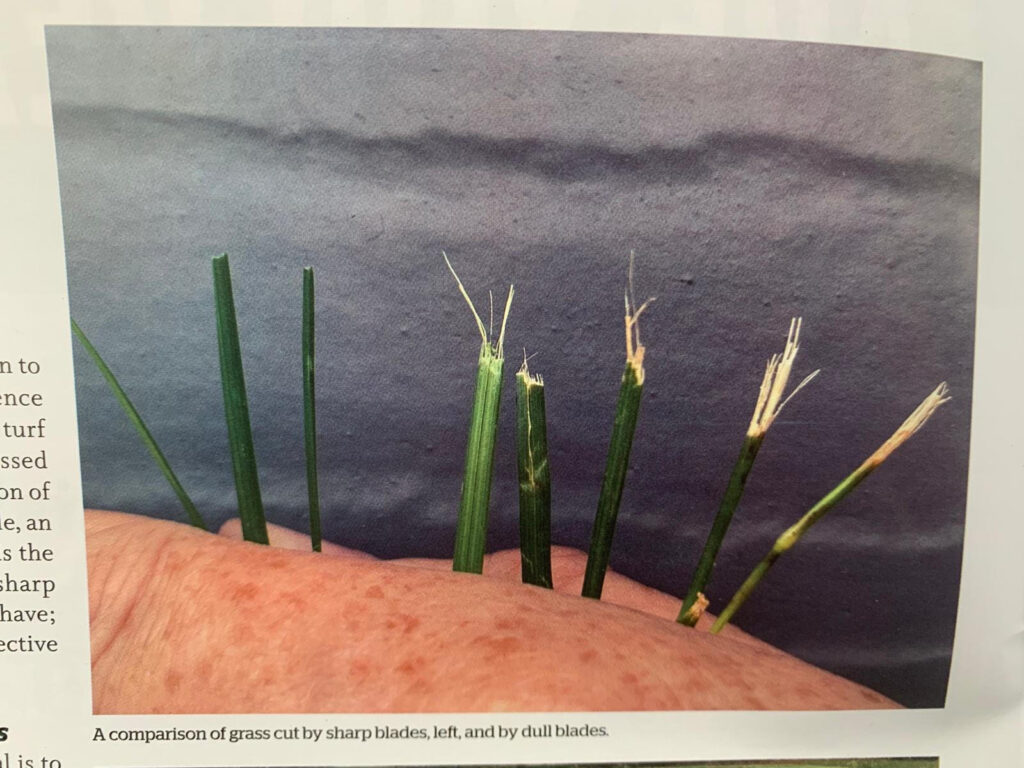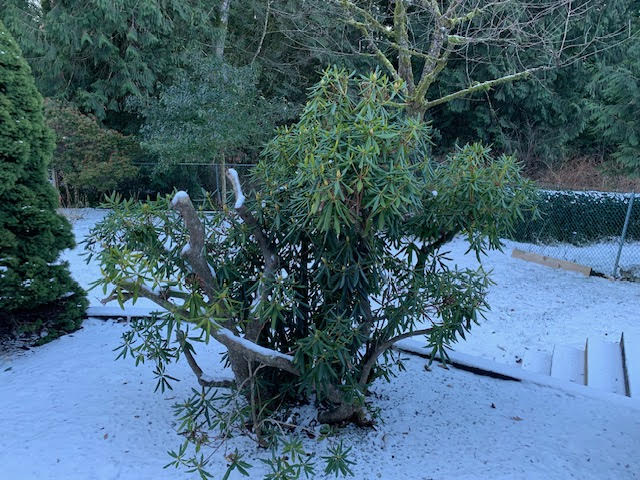
Don’t be shy!
Don’t be afraid to make changes in your garden. Nothing stays static in nature and your garden. Plants thrive or die, some plants outgrow their space and some don’t work well anymore. And some perennials were designed for division and transplanting.
Editing your garden can be fun, too. For professional landscape maintenance workers, editing can provide nice relief from regular weeding and cultivating duties. They usually welcome the chance to do some editing.
Let’s do it!
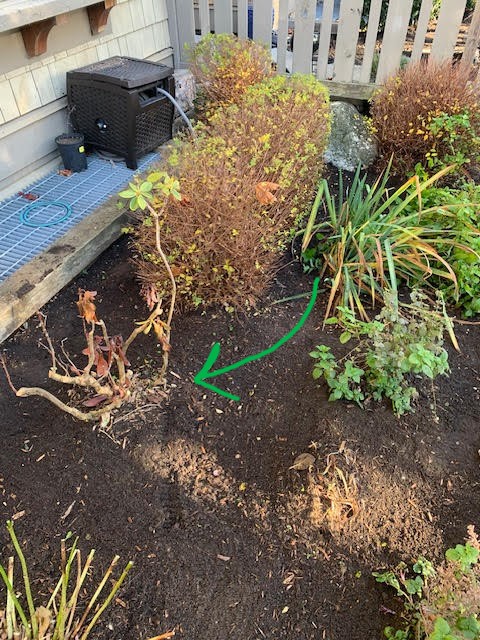
What changes can we make here? Obviously, the rhododendron on the left is struggling with only one branch showing life. It’s a miserable specimen and it should go. This is what I told the dude who asked me about it.
If you’ve read my blog post from December 7, 2024, then you know I love to rescue plants. Healthy plants. Not this rhododendron; this one should be recycled into new soil.
Dead or struggling plants detract from your garden presentation; they can’t inspire anyone. So, nurse them back to health or toss them.
Once we removed the rhododendron, we had a problem with the hole this created. So we decided to move the perennial in there. It will splash its foliage in the spot next year and it might be happier with more space.
When you move these perennials in fall, you can also divide them. We could have created two clumps to cover up more space. That way, weeds get shaded out and hopefully outcompeted.
Quick check: weeds & edging
After you move your plants, check your bed for weeds and other blemishes, like tired bed edges. Staying on top of your weeds is a common strategy for gardeners.
We can’t see the bed edge in the photo but I know it could have used a nice ninety-degree deep edge. This sharpens everything nicely by re-defining the border between our lawn and planted bed. Use an edging shovel (flat bottom) and stick it in at ninety degrees. Remove any grass chunks. See my blog post on deep edging here.
Conclusion
Have some fun in your garden. If you find plants to edit, do it. Be brave. We improved the look of one bed literally in minutes. You can do it, too!




